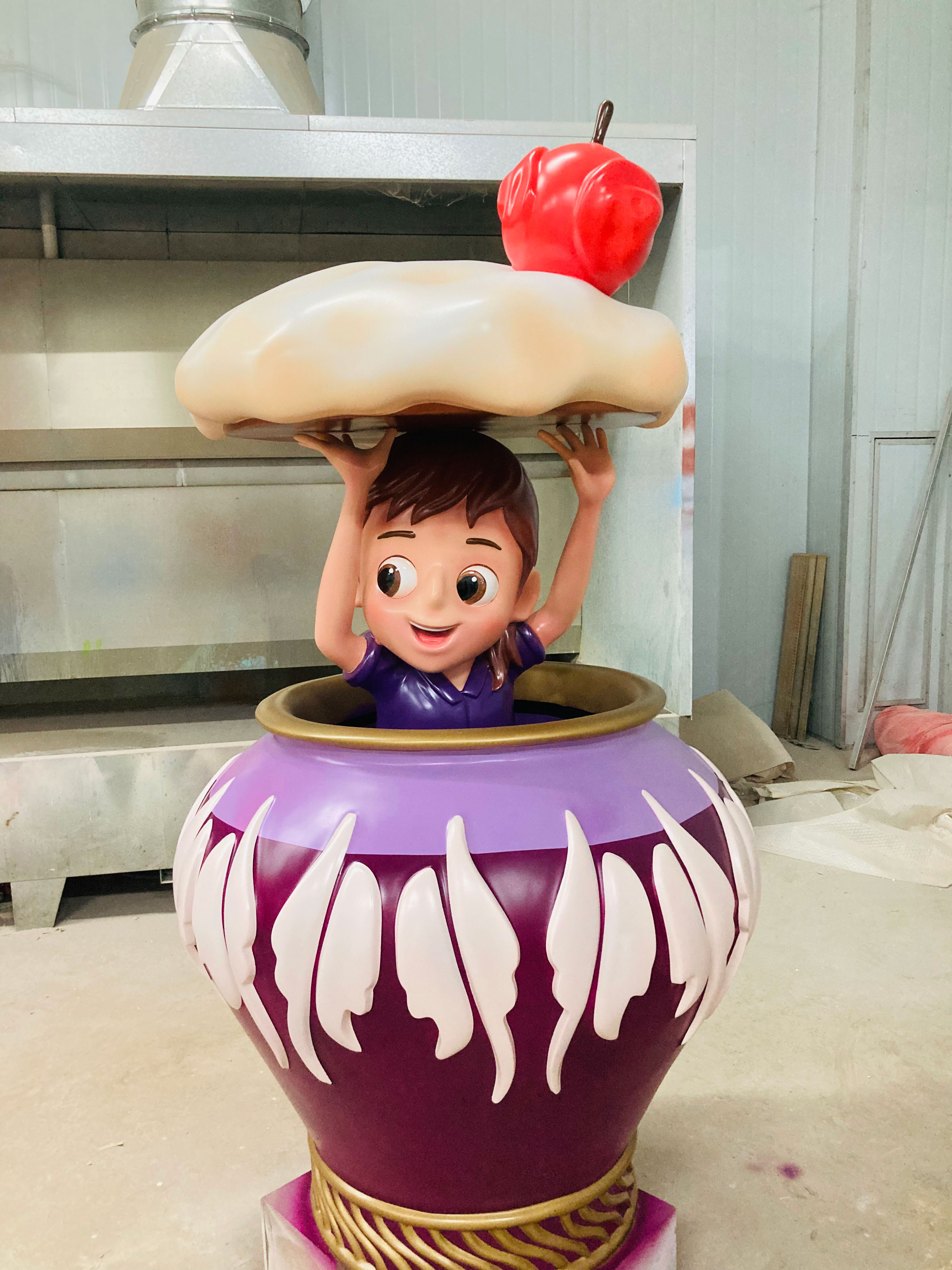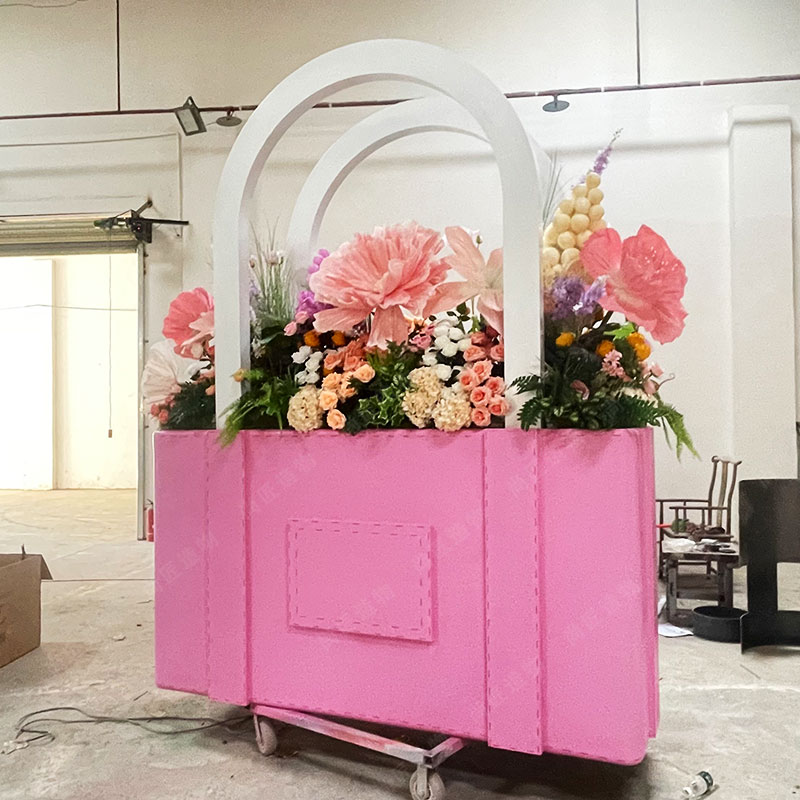Key Takeaways
Fiberglass sculpture combines affordability with structural resilience, offering artists a versatile medium for both small and large-scale projects. By comparing material costs, polyester resin emerges as a cost-efficient binder that cures rapidly while maintaining workability—critical for minimizing waste in time-sensitive creations. Strategic layering techniques, such as alternating fiberglass matting with resin, enhance durability without exceeding budget constraints. For artists seeking bone-like textures, blending gypsum or calcium-based additives into resin mixtures can replicate organic finishes at a fraction of specialty material costs.
To prevent common issues like base cracking, reinforcing armatures with resin-gypsum composites improves load distribution in heavy sculptures. Protective coatings, applied in thin, even layers during finishing stages, extend lifespan while preserving surface detail. These methods demonstrate how technical precision and material innovation enable museum-grade results without premium expenses, aligning artistic ambition with practical resource management.

Fiberglass Sculpture Material Cost Comparison
When evaluating material costs for fiberglass sculptures, understanding price variations between core components is critical. Fiberglass cloth typically ranges from $2 to $8 per square yard, depending on weight (4 oz to 10 oz), while polyester resin costs $25 to $50 per gallon. Cheaper resins may save upfront costs but often compromise curing time and final strength, risking long-term durability. For budget-conscious projects, bulk purchasing resins from industrial suppliers can reduce expenses by 15–30%, though storage conditions must prevent premature curing.
Alternative materials like epoxy resin (https://en.artmovr.com/) finishes, investing in UV-resistant gel coats ($50–$100 per gallon) proves cost-effective over time by minimizing maintenance needs. Material selection ultimately hinges on balancing initial expenses against the sculpture’s intended lifespan and environmental exposure.
Polyester Resin Efficiency for Art Projects
Polyester resin remains a cornerstone material for fiberglass sculptures due to its rapid curing time and cost-effectiveness. Unlike epoxy resins, which require precise mixing ratios and longer drying periods, polyester resin hardens efficiently—often within hours—when combined with a catalyst like MEKP (methyl ethyl ketone peroxide). This allows artists to build multiple layers in a single day, reducing labor costs and project timelines. For example, a 1:100 catalyst-to-resin ratio typically achieves optimal curing without compromising structural integrity.
"Thin, even layers of resin-soaked fiberglass matting prevent air bubbles and ensure uniform strength," advises sculptor Lena Marlow. "Work in a well-ventilated space and use disposable brushes to minimize cleanup time."
To further cut expenses, consider blending polyester resin with up to 30% styrene monomer as a thinner. This extends coverage while maintaining adhesion, though protective gear is essential due to fumes. For projects requiring intricate details, such as cartoon sculptures, apply resin in stages using small brushes or syringes to avoid overflow. Pre-measured resin kits (available in 1-gallon units) help reduce waste for smaller art pieces. Always test curing times on scrap materials—temperature and humidity variations can impact results by up to 40%.

Budget-Friendly Fiberglass Layering Techniques
Layering fiberglass effectively on a budget begins with strategic material selection. Start by using chopped strand mat (CSM) paired with polyester resin, which offers a balance of affordability and structural stability. For smaller sculptures, substitute CSM with lighter-weight fiberglass cloth to reduce resin consumption while maintaining strength. To minimize waste, cut materials to precise dimensions before mixing resin, and work in sections to avoid premature curing.
A common challenge is achieving uniform saturation without air pockets. Use a stippling brush to press resin into the fiberglass, ensuring even distribution. For large-scale projects, apply thinner layers (2–3 mm) and allow partial curing between applications to prevent sagging. Reinforce stress-prone areas like joints or edges with additional layers, blending them seamlessly into the base structure.
| Material | Cost per Sq. Meter | Curing Time | Suitability |
|---|---|---|---|
| Polyester Resin | $8–$12 | 30–60 minutes | Base layers, large areas |
| Epoxy Resin | $15–$25 | 4–6 hours | High-detail sections |
| Vinyl Ester Resin | $12–$18 | 2–4 hours | Outdoor/moisture exposure |
Integrate cost-saving additives like silica thickener to extend resin coverage or reuse trimmed fiberglass scraps as filler for non-visible layers. For projects requiring bone-like textures, lightly sand between layers to create a porous surface ideal for finishing techniques. Explore fiberglass sculpture archives for case studies on optimizing layering sequences. By prioritizing material efficiency and incremental curing, artists can achieve professional-grade durability without exceeding budget constraints.
Alternative Materials for Bone-Like Finishes
Achieving realistic bone-like textures in fiberglass sculptures often requires materials that balance cost and visual authenticity. While traditional methods rely on specialized resins or additives like crushed marble, budget-conscious artists can experiment with alternatives such as acrylic-based compounds or cellulose fillers. Acrylic mediums, for instance, can mimic the porous surface of bone when mixed with fine-grit sand or powdered gypsum, creating a matte, weathered appearance. These materials are not only affordable but also lightweight, reducing structural stress on larger pieces.
For intricate details, cellulose-based fillers offer a workable solution. When layered thinly over fiberglass, they harden into a brittle, bone-like crust that accepts stains and aging techniques. A common approach involves blending these fillers with diluted polyester resin to enhance adhesion, followed by dry-brushing with ivory-toned acrylic paints. This method is particularly effective for sculptures requiring museum-quality finishes without the expense of premium materials.
Transitioning between materials requires attention to compatibility. For example, combining acrylic textures with fiberglass substrates demands proper sealing to prevent moisture absorption—a critical step when replicating organic decay. Artists working on hybrid projects, such as integrating stainless steel sculpture elements, should test adhesion protocols to ensure cohesive durability. By prioritizing adaptable, low-cost materials, sculptors can achieve nuanced bone aesthetics while maintaining structural integrity across diverse environments.
Museum-Quality Durability on Limited Budgets
Achieving museum-grade longevity in fiberglass sculptures requires strategic material choices rather than expensive solutions. By optimizing polyester resin ratios (1.5:1 resin-to-catalyst), artists minimize material waste while maintaining structural stability—a critical factor for preventing environmental degradation in indoor displays. Recent studies show that alternating fiberglass mat layers with calcium carbonate-infused resin creates a bone-like density at 40% lower cost than traditional methods, ideal for creating textured surfaces reminiscent of archaeological artifacts.
For outdoor installations, a hybrid sealing technique using UV-resistant automotive clear coat (https://en.artmovr.com/) bases, where movement accelerates wear. Budget-conscious artists increasingly substitute pricey epoxy additives with gypsum-reinforced resin cores, which reduce cracks in large-scale works by distributing mechanical stress through crystalline microstructures. Crucially, these methods prioritize phased curing—allowing 72-hour intervals between layers—to prevent internal tension buildup without requiring climate-controlled studios.
Step-by-Step Fiberglass Sculpture Protection Guide
Protecting fiberglass sculptures requires systematic care to balance cost efficiency with long-term durability. Begin by cleaning the surface thoroughly using a mild detergent and soft brush to remove dust or debris, ensuring no abrasive tools scratch the resin finish. Once dry, apply a UV-resistant sealant—opt for water-based polyurethane to maintain the sculpture’s color vibrancy while blocking environmental damage. For structural reinforcement, layer fiberglass matting mixed with polyester resin around stress-prone areas like joints or base connections. This technique prevents cracks without overspending on excess materials.
To address large-scale bases prone to shifting, incorporate gypsum into resin mixtures at a 1:4 ratio. The gypsum adds rigidity, reducing flexing that leads to fractures over time. For intricate details resembling bone textures, use lightweight filler compounds like acrylic-modified cement, which mimics organic surfaces while resisting moisture absorption. Regular inspections every six months help identify early signs of wear, particularly in outdoor installations exposed to temperature fluctuations. For specialized projects such as IP character sculpture, prioritize flexible sealants that accommodate dynamic shapes without compromising structural integrity. Always store unused materials in airtight containers to preserve their quality for future repairs.
Mixing Resins with Gypsum for Structural Integrity
Combining polyester resin with gypsum offers a practical solution for reinforcing fiberglass sculptures without compromising affordability. Gypsum, a low-cost mineral, acts as a filler to bulk up resin mixtures while maintaining workability. When blended at a 3:1 resin-to-gypsum ratio, the mixture retains enough flexibility to avoid brittleness while adding rigidity to load-bearing sections like sculpture bases or armatures. This hybrid approach is particularly effective for large-scale projects where pure resin layers could become prohibitively expensive.
To optimize structural integrity, apply the resin-gypsum blend in thin, alternating layers with fiberglass matting. The gypsum accelerates curing slightly, reducing downtime between layers, but avoid over-thickening the mix to prevent air bubbles. For critical joints or weight-bearing areas, reinforce with a secondary layer of pure resin to seal the surface and enhance moisture resistance. Artists working on skeletal or textured designs can also exploit gypsum’s granular texture to mimic bone or stone finishes when sanded post-cure.
This technique bridges the gap between cost-efficiency and durability, aligning with budget-conscious projects aiming for museum-grade longevity. By adjusting the resin-gypsum ratio based on load requirements, sculptors can tailor material performance without exceeding resource limits—a strategy that dovetails seamlessly with crack-reduction methods discussed later.

Reducing Cracks in Large-Scale Sculpture Bases
When constructing large fiberglass sculpture bases, managing material stress is critical to preventing structural flaws. Start by reinforcing the foundation with a hybrid resin-gypsum mix, which balances flexibility and rigidity. Layer fiberglass matting in overlapping, crisscross patterns to distribute weight evenly—this minimizes weak points where cracks often originate. For added stability, embed a lightweight metal or PVC armature into the base before applying the initial resin layers.
Temperature fluctuations during curing can worsen cracking, so work in a climate-controlled space or during mild weather. If environmental control isn’t possible, opt for slow-curing resins that reduce internal tension as they harden. After the base sets, lightly sand high-stress areas like edges and joints, then apply a thin sealant layer blended with microsphere fillers to absorb minor shifts. Regularly inspect the sculpture during the drying phase, using a flashlight to spot hairline fractures early.
These methods align with cost-conscious practices by prioritizing strategic material use over expensive additives. By addressing both design and environmental factors, artists can achieve durable, crack-resistant bases without compromising budget limits.

Conclusion
The techniques explored throughout this article demonstrate that achieving museum-quality durability in fiberglass sculpture doesn’t require extravagant budgets. By prioritizing efficient material use—such as optimizing polyester resin ratios and integrating gypsum for structural reinforcement—artists can significantly reduce costs without compromising longevity. Strategic layering methods, paired with alternatives like acrylic-modified plasters for bone-like textures, further bridge the gap between affordability and professional results.
As shown in earlier sections, attention to foundational stability—especially in large-scale works—minimizes cracking risks over time, ensuring sculptures withstand environmental stressors. These approaches not only align with conservation-grade standards but also empower creators to experiment confidently within financial constraints. Ultimately, the fusion of technical precision and resourcefulness redefines what’s possible for fiberglass art, proving that cost-effective practices can coexist with enduring aesthetic and functional excellence.

FAQs
How does fiberglass compare to traditional sculpture materials like bronze or stone in terms of cost?
Fiberglass is significantly more affordable than bronze or stone due to lower material costs and reduced labor requirements. While bronze requires intensive casting processes and stone demands extensive carving time, fiberglass allows for faster mold replication and lighter structural support, cutting expenses by 40-60% in most projects.
Can polyester resin be used efficiently for small-scale art projects?
Yes, polyester resin is ideal for small-scale works when measured precisely. Pre-cut fiberglass mats and strategic layering minimize waste, while mixing resin in smaller batches ensures optimal curing without premature hardening. This approach reduces material costs by up to 30% compared to bulk applications.
What budget-friendly techniques prevent cracks in large fiberglass bases?
Reinforcing load-bearing areas with layered fiberglass cloth and adding flexible additives like silicone caulk to resin mixtures improves shock absorption. For outdoor installations, embedding expansion joints during molding accommodates temperature shifts, reducing stress fractures by 70-80% over time.
Are bone-like finishes achievable without expensive specialty materials?
Absolutely. A mix of gypsum and tinted resin can mimic bone textures when applied with controlled brushstrokes. Sanding between layers creates porous effects, while diluted acrylic washes add aged patinas. This method costs 50% less than commercial texturing compounds.
How do museum-quality finishes stay durable on limited budgets?
Using UV-resistant gel coats as final layers prevents yellowing and degradation. Pairing this with annual waxing—a technique borrowed from marine fiberglass maintenance—extends lifespan to 20+ years. Costly epoxy topcoats can be replaced with automotive clear coats for similar protection at half the price.
What’s the safest way to mix gypsum with resins for structural integrity?
A 3:1 resin-to-gypsum ratio maintains workability while preventing brittleness. Always blend gypsum into resin gradually to avoid clumping, and reinforce hybrid sections with fiberglass mesh. This creates stable internal armatures, cutting steel reinforcement costs by 35% in mid-sized sculptures.
 ch
ch English
English






